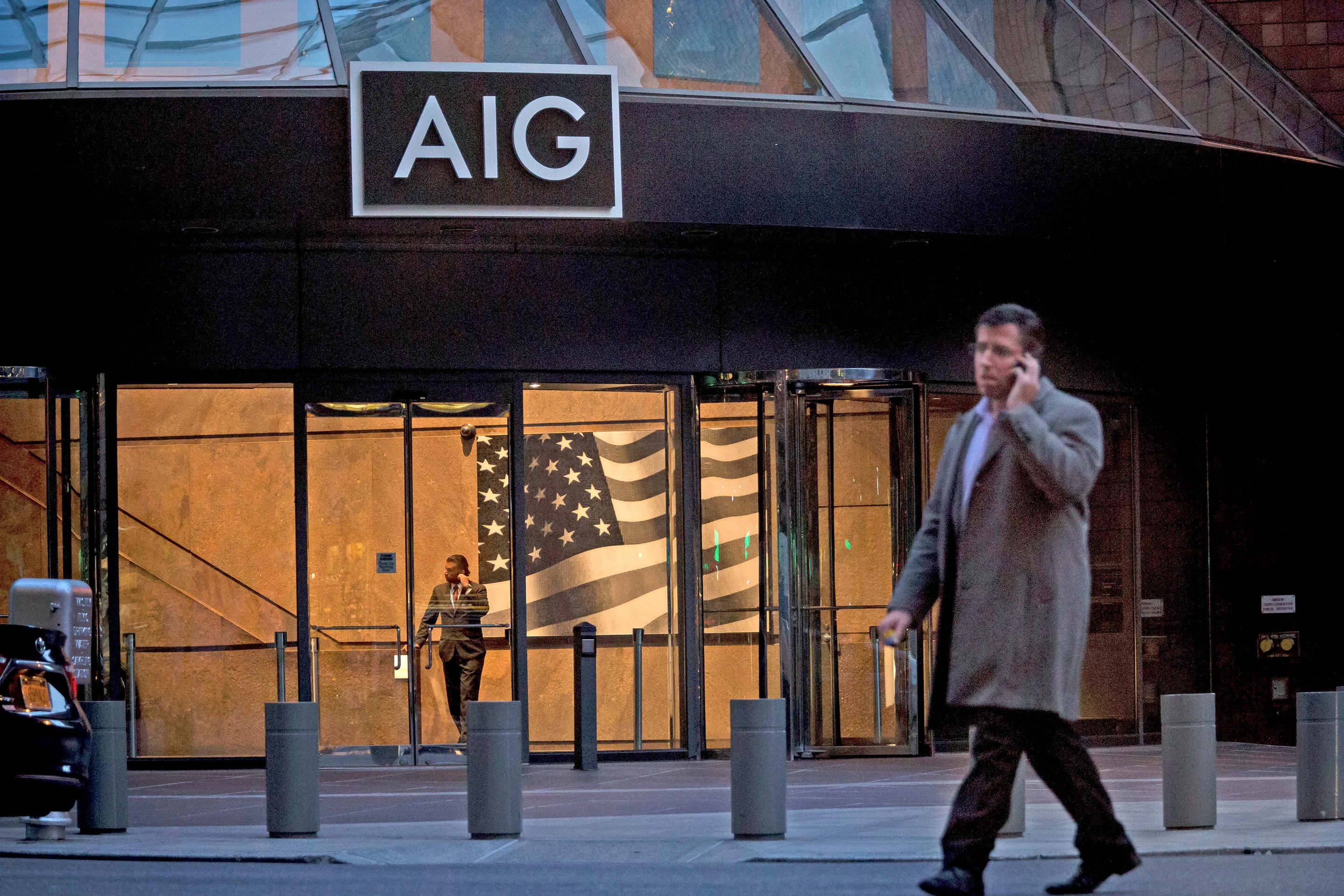
¶ The Rescue of AIG
¶ Background
American International Group (AIG) was founded in 1919 in Shanghai as a generalized insurance agency called American Asiatic Underwriters.
Over the next 90 years, by hook or by crook, AIG would grow; by 2008 held over $1T of assets.
¶ Warning Signs
First let’s set the scene: It’s early 2000s, AIG is a global institution, sitting at the center of the worlds insurance and financial services market.
If you’re paying attention, the warning signs are there.
In November 2004, AIG settled with the SEC for $126MM over [a lot of problems]. Of particular concern were non-traditional insurance products.
In 2005, AIG become entangled in an accounting scandal, resulting in a $1.6B fine and criminal charges for some executives.
¶ Mortgage Exposure
As a result of the chaos created by the 2005 accounting scandal, Martin Sullivan became CEO. Shortly after, AIG began taking on staggering amounts of risk on mortgages.
The 2 most important mortgage-exposed activities: Credit Default Swaps (CDS) and securities lending.
¶ Credit Default Swap
A Credit Default Swap (CDS) is a financial instrument that behaves like an insurance contract on a bond or a similar security. In the event of default, the CDS writer (insurance seller) promises to pay to the buyer the difference between the market value and the notional value of the bond.
The difference between insurance and a CDS is simple: regulation.
Both products do functionally the same thing. However, insurance is closely regulated to ensure that a company will always be able to deliver against claims.
A CDS? You just cross your fingers.
As of December 31, 2007, AIG had written CDS against:
- Corporate loans: $230B
- Prime residential mortgages: $149B
- Corporate debt/collateralized loans: $70B
- Multi-sector collateralized debt obligations: $78B
Total CDS exposure: $527B
In the end, the multi-sector collateralized debt obligations (inc. subprime mortgages) turned out to be the most troublesome.
¶ Securities Lending
The other activity which ended up causing the collapse of AIG is securities lending.
In a securities lending transaction, one party borrows a security from another and deposits collateral, typically cash, with the securities lender. After the transaction, the borrower may use the security as needed (short-selling, etc). The lender invests the cash collateral and earns a yield from these investments. The borrower can end the transaction by returning the security, at which time the lender must return the collateral.
At AIG, securities lending was used for the “benefit” of its life insurance subsidiaries. These subsidiaries would provide securities (typically corporate bonds) that were loaned out against cash collateral. This cash could then be deployed into safe assets to generate additional yield.
And so, AIG invested the collateral in mortgage-backed securities.
¶ Systemic Risk
Both CDSs and securities took on incredible exposure to the US real estate market (regardless of how many layers of financial obscurity they layered in on top).
Selling a CDS is a one-way bet on real estate.
- Home prices go down → more mortgage payers default → CDS seller has to pay out
- Home prices go up → no benefit
The AIG securities lending business was built a large liquidity and maturity mismatch. As long as AIG could make new security loans when existing ones came due, it could maintain its long-run, illiquid investments.
Is it ponzi? 🤷♂️ But it’ll definitely create a bank run.
Imagine that securities borrowers believe AIG faces insolvency; they will race to secure their funds before the bank runs out of cash. To raise capital AIG would need to sell assets…
…reducing the price/value of those remaining…
…increasing the risk of insolvency.
¶ Maximizing Yield with Multiplying Risk
Securities lending expanded considerably in the run-up to 2008. At the end of 2003, AIG had less than $30B outstanding; 2007 it had $88B.
A year later, it would be ~$0.
At the peak, AIG was loaning 19% of its domestic life insurance assets. MetLife, a similarly positioned competitor, never crossed 10%.
¶ Time to Pay Up
As the subprime mortgage crisis metastasized into the financial sector, it was the Life Insurance (via securities lending) and Financial Services business units who crumbled under the onslaught.
AIG 2008 performance:
- Life Insurance: -$21B
- Financial Services: -$29B
¶ Too Big to Fail
Due to its size and role in the financial system, AIG became the poster child for “too big to fail.”
And so, it didn’t.
On September 16th, 2008, The Fed provided an $85B loan to AIG in exchange for 80% of the company. In total, AIG would receive $182B of government loans.
1 day before he bailed out AIG, Treasury Secretary Paulson said there would be no further Wall Street bailouts. That comment had forced Lehman Brothers into bankruptcy.
It came one week after the government took over Fannie Mae and Freddie Mac. It was six months after the Fed bailed out Bear Stearns. Later that week, Paulson and Bernanke asked Congress for a $700 billion bailout to rescue all other banks.
¶ The Aftermath
AIG fell, sending shockwaves through the financial system and further fueling Global Financial Crisis.
Millions upon millions would go on to suffer for at least a decade; you know many of them today. And the people responsible for all this?
After reporting the largest loss in history (-$62B in 2008 Q4) and taking the bailout, AIG paid $165MM in bonuses to its executives.
Retention bonuses - “It took the same sophistication to land the plane as to take it off” (or whatever).
And so ends the story of American International Group, the apes so degen they not only liquidated the whole planet…
…they got PAID to do it.
Guess who paid them?

¶ Resources
Source Material - Tweet Link
Source Material - PDF